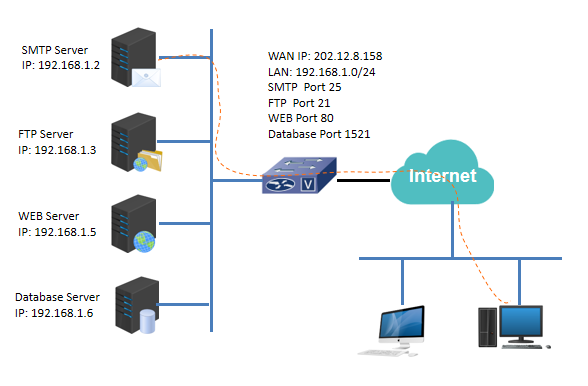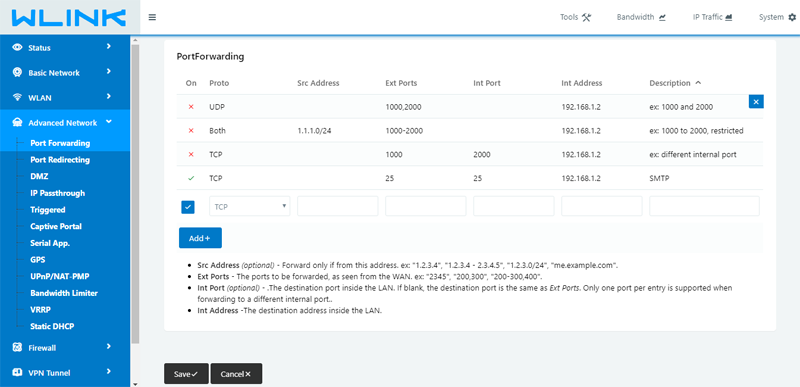
HOME < Technology < Port Forwarding
Introduction
Port forwarding is an application of network address translation, which maps a port of the IP address of an external host to a computer in the internal network to provide corresponding services. When the user accesses to the port of the IP address, the server automatically request the mapping to the corresponding computer of LAN. The port forwarding function can also complete some specific proxy functions, such as proxy pop, SMTP, telnet and other protocols. Theoretically, there are 64511 ports available, which is subtracted 1024 (reserved ports) from 65535 (total ports).

Why use Port Forwarding
1) Enable to save IPv4 address resources and alleviate IPv4 address shortage issue.
2) Enable to avoid attacks from outside the network, hide and protect computers inside the network.
3) Used to block unnecessary communication on the network.
Types of port forwarding
1) Static Local port forwarding
Open a fixed port on the gateway, the configure forwarding rule as all date received by the port will be forwarded to the specified IP and port of intranet.
The forwarding rule will be always kept whatever the connection is on or not, so the host of internet can be accessed from public network.
2) Dynamic port forwarding
If a computer of intranet wants to visit the website, it will send a packet to the gateway. The packet header includes the destination IP/port and local IP/port. The gateway will replace the local IP/port with its public IP and an unused port, and will record the forwarding relationship for future packet forwarding. Then send the data to the destination website, the website will respond after receiving the data, and send the data to the unused port of the gateway. The gateway will forward the data to the computer of intranet to realize the communication between the intranet and the public network. When the connection is closed, the gateway will release the assigned port so that the future connection can continue to use the port.
Port forwarding in WLINK 4G/5G Router

-- The end











